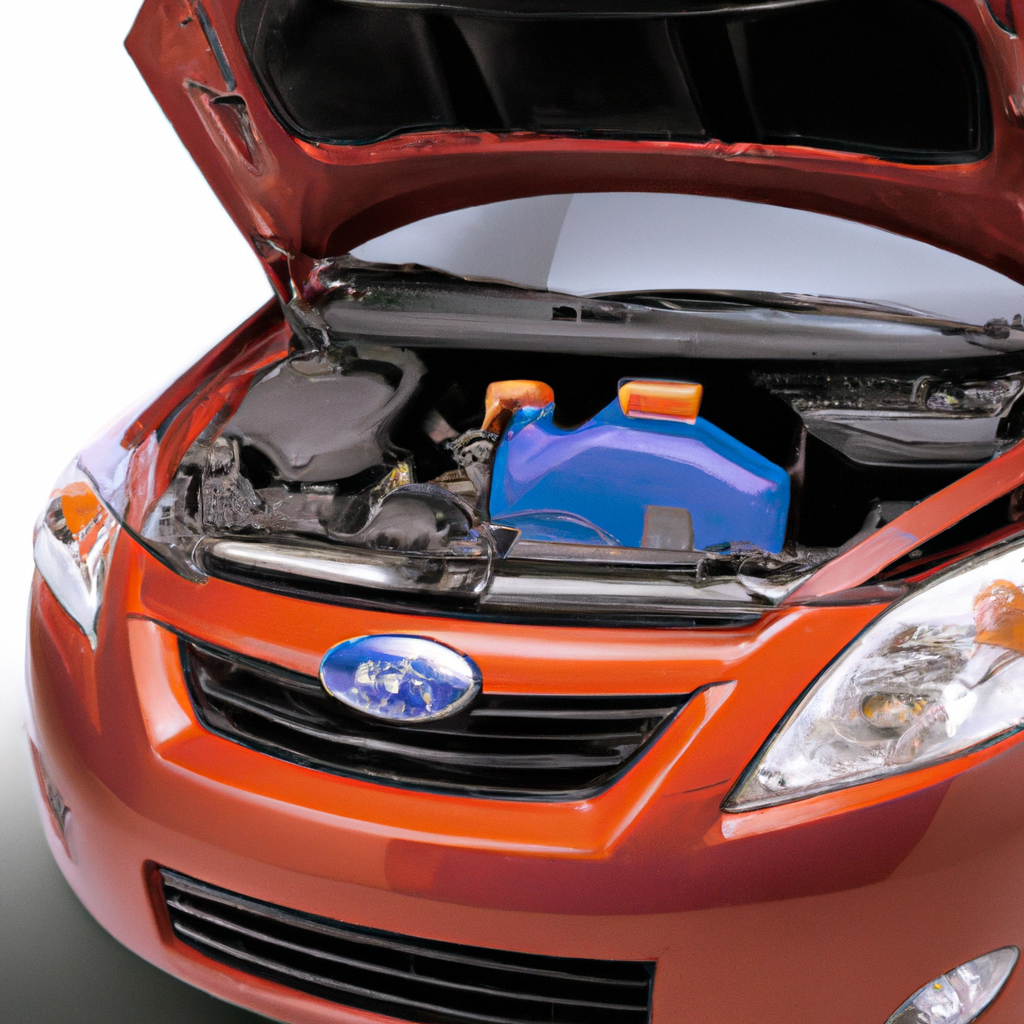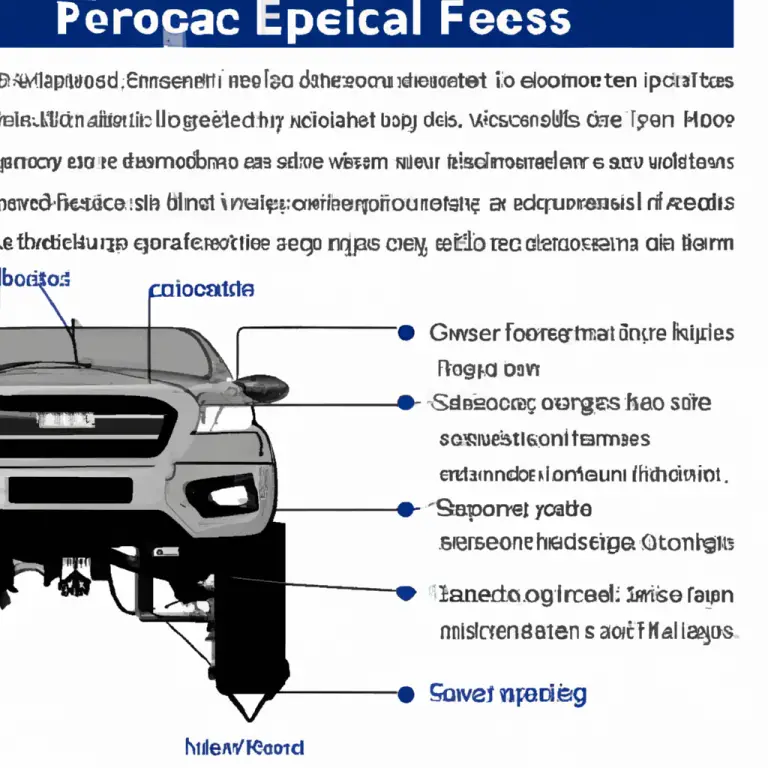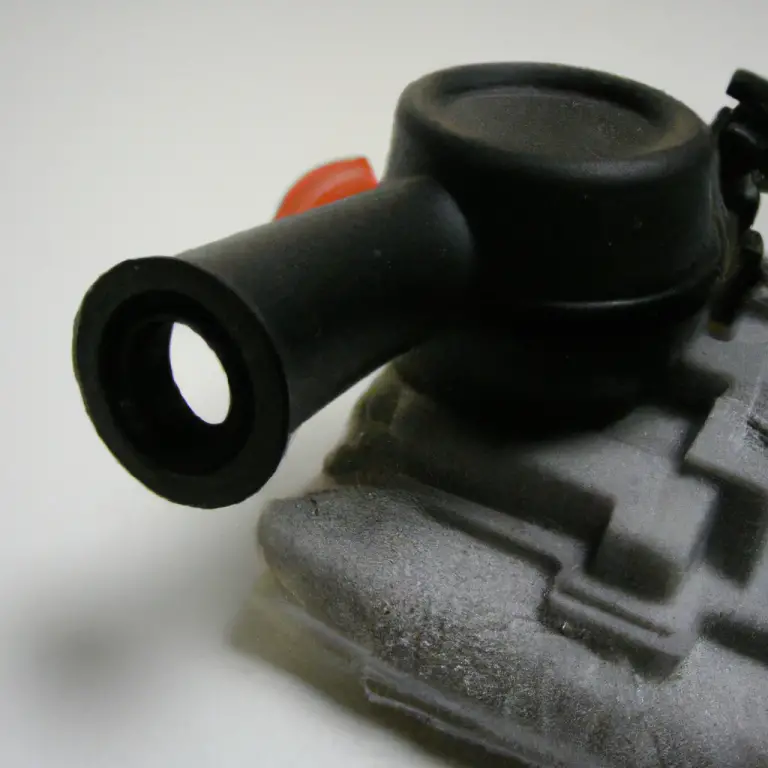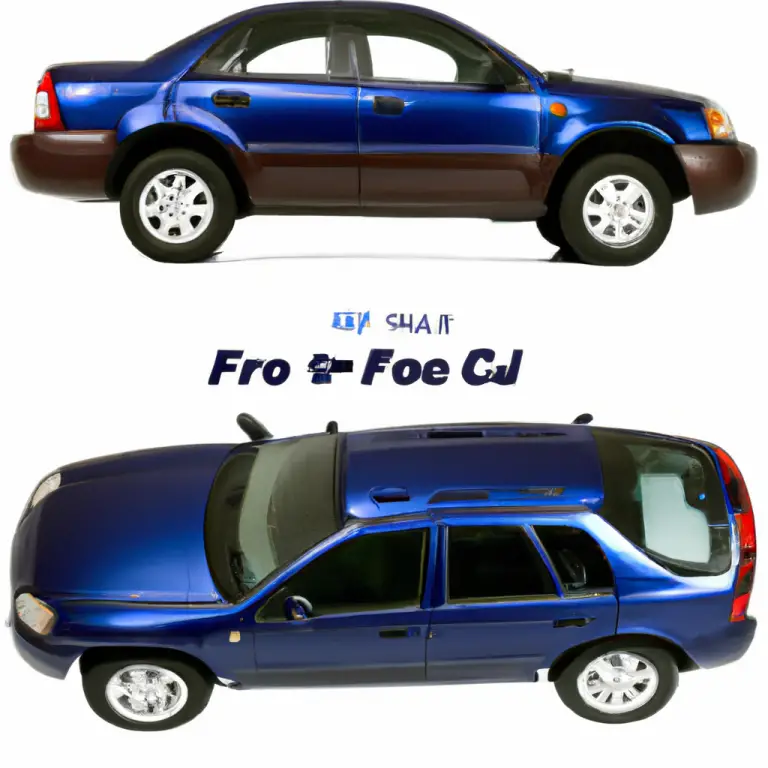Ford Escape Fuel Leak Recall
Last Updated on by Axle McRoad
In this comprehensive expose, I will explore the minutiae of the Ford Escape Fuel Leak Recall—an issue that has wrappled numerous Ford owners, DIY enthusiasts, mechanics, and auto-care aficionados. I aim to equip you with a deeper understanding of the situation by providing insightful repair concepts, shedding light on the risks and remedies stemming from said recall. Brace yourself for an enriching expedition through this mechanical maze that has ensnared a segment of the Ford fraternity. Drawn from accurate sources and anecdotes, this article serves as an essential guide in your journey of automotive knowledge.
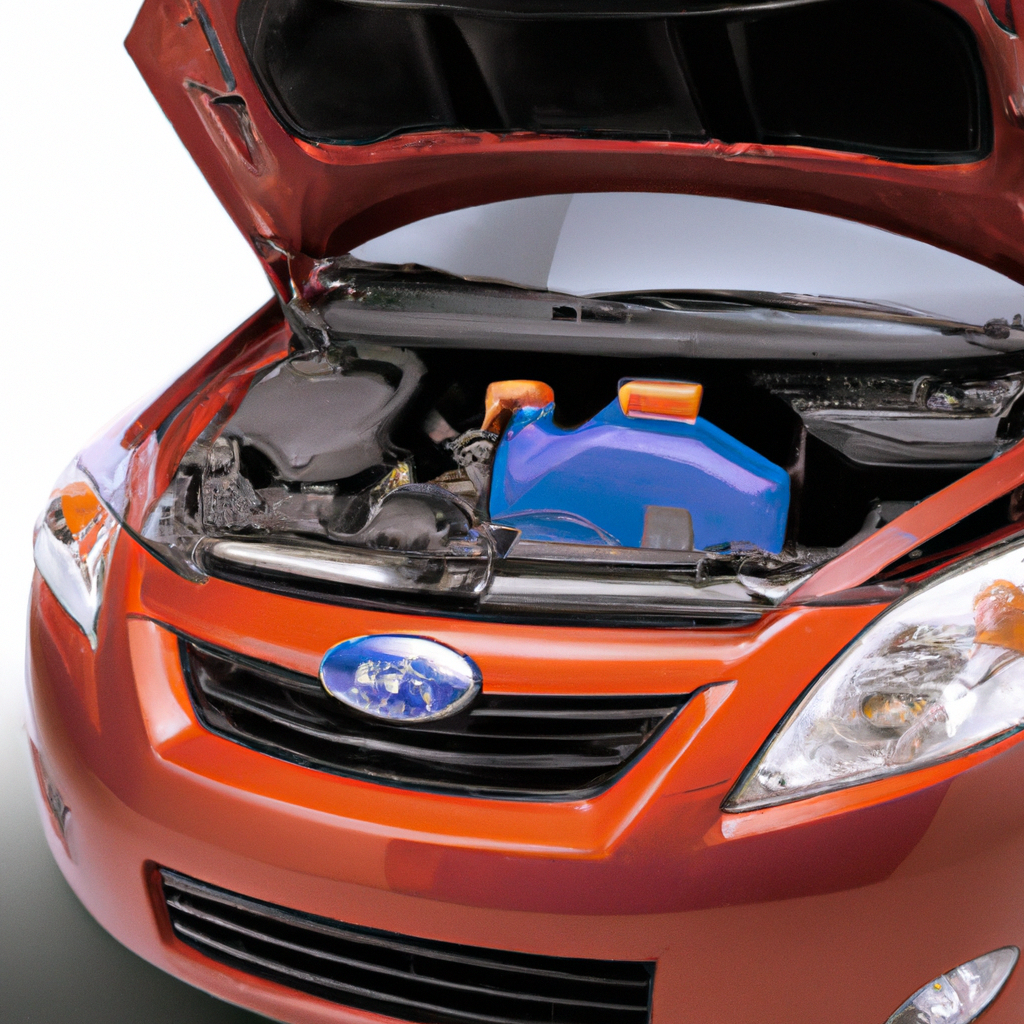
Initial Ford Escape Fuel Leak Recall
Details about the initial recall
In the initial recall, Ford Motor Company identified an issue regarding a possible fuel leak in a series of Ford Escape models. This problem was due to a fault present in the fuel delivery module, posing a risk of fuel leak which could lead to a possible fire. The concern was immediately flagged due to the potential danger it could pose to drivers and passengers, and thus, the recall was issued to address this problem.
Models involved in the initial recall
The initial recall largely involved Ford Escape models produced between 2012 and 2013. Given the serious nature of the safety hazard posed by the fuel leak, Ford prioritized the recall of these particular models to quickly rectify the situation at hand.
Issue causing the fuel leak
The issue resulting in the fuel leak was concluded to be a faulty fuel delivery module. This faulty module had the potential to crack, allowing fuel to leak out. Although the problem did not affect all vehicles in the identified model range, Ford decided to recall all potentially impacted vehicles to ensure safety.
Ford’s response to the fuel leak
Upon discovery of the issue, Ford acted quickly to initiate a recall. Their response included contacting owners of the potentially affected models and providing guidance about how to proceed. The company also ensured that all repair costs relating to the fuel leak issue would entirely be covered by them.
Inspection and Repair Process
Expected inspection process
Once the vehicle is delivered to the dealership, the inspection process begins. This process involves technicians inspecting the fuel delivery module for any signs of cracking or leaks. If any problems or potential problems are identified, the vehicle moves to the repair phase.
Potential repair needs
Depending on the extent of the problem, the repair process can involve either sealing the cracks found in the module or replacing it altogether. The decision is made based on the technicians’ assessment of the situation, keeping paramount user safety and the efficiency of the vehicle.
How dealerships involved in the process
Dealerships play a key role in this process. They receive the recalled vehicles, conduct the inspection and necessary repairs, and liaise with the customers regarding the status of their vehicle. They also facilitate the communication between Ford and the vehicle owners.
Estimated duration of the repair process
The duration of the repair process largely depends on the extent of the damage to the fuel delivery module. But in general, the entire inspection and repair process can range anywhere between a few hours to a couple of days.
Impact on Vehicle Performance
How fuel leak affects the car’s performance
A fuel leak can have a significant impact on a car’s performance. It can lead to decreased efficiency, reduced power, abnormal engine operation, and in worst-case scenarios, a potential fire hazard.
Driving safety concerns due to fuel leak
Safety is the primary concern when dealing with a fuel leak. With the presence of a leak, there is a risk of fuel coming into contact with hot surfaces of the engine and igniting, causing a potential fire.
Signs indicating fuel leak in Ford Escape
Signs to look out for to indicate a potential fuel leak include a smell of gasoline inside or outside of the vehicle, drops of fuel under the vehicle, and a decrease in fuel efficiency. In such cases, it is advised to contact the dealership immediately.
Consumer Reactions to the Recall
Initial reaction from Ford Escape owners
The initial reaction from Ford Escape owners was a mix of concern and appreciation. While concerns were raised about the potential safety implications, appreciation was expressed for the proactive steps taken by Ford to rectify the situation.
Concerns raised by Ford’s customers
Issues raised by customers were primarily related to the potential risk of fires and the inconvenience of the recall process. Some owners expressed worry about the safety of their vehicles and the time required for inspection and repair.
How the company addressed these concerns
To address these concerns, Ford reassured customers about the company’s commitment to their safety and satisfaction. Ford also made efforts to expedite the inspection and repair process to minimize disruptions for the customers.
Consumer trust in Ford post-recall
Although it was a significant issue, Ford’s immediate response and commitment to resolving the problem helped in maintaining consumer trust. The majority of customers appreciated Ford’s proactive handling of the situation.

Potential Consequences of Ignoring the Recall
Severity of damages if the problem is not addressed
Ignoring the recall and continuing to drive a vehicle with a potential fuel leak can lead to serious damages. These can range from engine malfunctions due to fuel inefficiency, to dangerous incidents like vehicle fires.
Risk factors associated with ignoring the recall
Ignoring the recall increases the risk of accidents due to the potential fire hazard. It can also result in costly repairs if the leaking fuel causes additional damage to the vehicle.
Long term consequences of not acting on the recall
Long term consequences of not acting on the recall include potential breakdowns, high repair costs, and even permanent damage to the vehicle.
Previous Recalls Related to Ford Escape
Any previous recalls before the fuel leak issue
Before the fuel leak issue, Ford Escape had been recalled for various other reasons. Some of these include issues related to airbags, throttle body assembly, and powertrain control modules.
How those recalls were addressed
Ford followed a similar approach in addressing these recalls as they did with the fuel leak recall. They informed the affected customers and covered all costs associated with inspection and repair.
Consumer reactions to previous recalls
Like the fuel leak recall, consumers appreciated Ford’s proactive approach to addressing issues. The open communication and transparency by Ford in these situations have played a significant role in maintaining customer trust.
The Role of Government Agencies
Involvement of National Highway Traffic Safety Administration (NHTSA)
The National Highway Traffic Safety Administration (NHTSA) played a key role in the recall process. They ensured Ford complied with safety standards and that all necessary corrective measures were taken.
Safety standards and tests conducted by NHTSA
NHTSA enforced safety standards and performed tests to assess the safety of the vehicles post-recall.
NHTSA’s role in enforcing the recall
As a government regulatory body, NHTSA played an essential role in enforcing the recall. They provided oversight on Ford’s recall management efforts and made certain consumers were informed and protected.
Comparison with Other Major Vehicle Recalls
Major recalls in automobile history
There have been several major recalls in the automobile industry with various issues, ranging from safety equipment malfunctions to emission problems.
Comparison of Ford’s handling of the recall with others
Ford’s handling of the recall, compared to some other recalls, was notable for its prompt action, transparent communication, and commitment to covering repair costs.
Lessons learned from other major vehicle recalls
From other major vehicle recalls, the key lesson is clear communication and quick action are paramount in maintaining consumer trust. Furthermore, these incidents remind automakers about the importance of a robust quality assurance process.
How Ford Aims to Prevent Future Incidents
Quality control measures taken by Ford
Ford has implemented stringent quality control measures to ensure issues like this do not arise in the future. These measures span the entire production process, from design to manufacturing and pre-release testing.
Efforts to improve vehicle safety
Ford is continually making investments in research and development to improve vehicle safety. They are using cutting-edge technology to engineer safety features that aim to enhance the overall driving experience and safety of their vehicles.
How Ford engages with feedback and complaints
Ford values customer feedback and takes complaints seriously. They use customer insights to continually refine their products and services. Their customer-focused approach is central to their commitment to delivering quality and safety.
Frequently Asked Questions
Common questions about the fuel leak recall
Common questions regarding the recall often pertain to how the repair process works, how long the repair would take, and how to determine if their vehicle is affected.
Clarifications on the recall process
The recall process involves contacting the vehicle owners, arranging for the vehicle to be taken to the dealership, conducting inspections, and executing necessary repairs.
Addressing doubts about the repair and vehicle safety
Ford has reassured customers that all necessary repairs needed to address the fuel leak are covered, and have reiterated their commitment to ensuring the vehicle’s safety.

